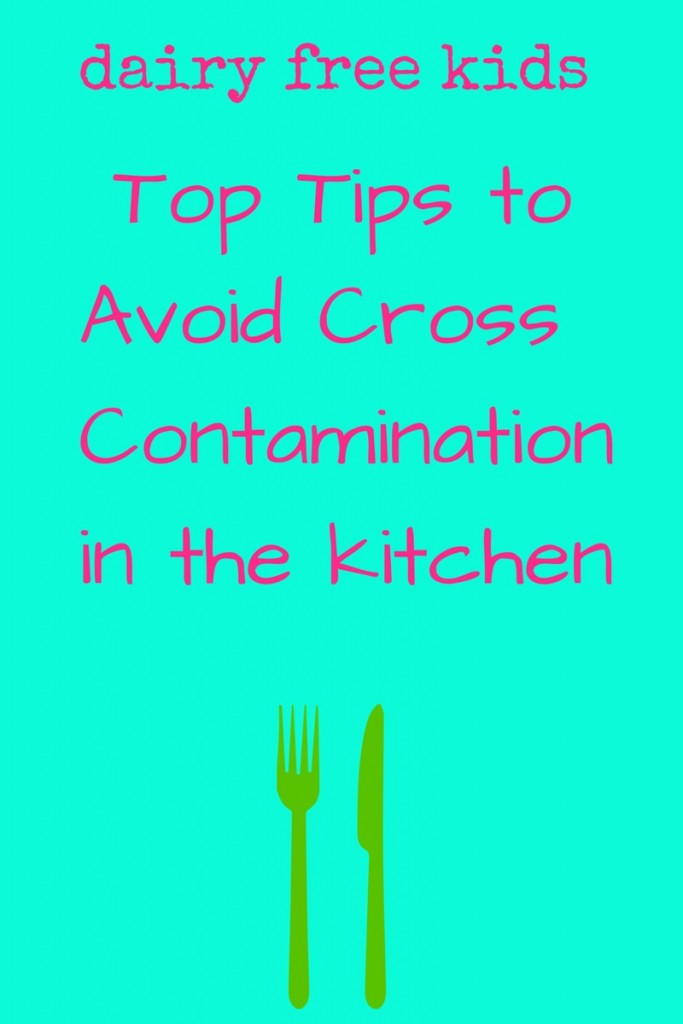Tips for Avoiding Cross Contamination in the Kitchen

- Label, label, label. If there is any chance at all of ambiguity label everything: ‘safe’/ ‘unsafe’, ‘contains dairy’ / ‘dairy free’, ‘Safe for Jane’/ ‘Unsafe for Jane’ etc. It is best to stick with one method of labelling, keep it simple and always do it the same way. For example, choose ‘safe’ and ‘unsafe’ or just use a simple colour code e.g. the safe foods have green labels and the unsafe red so you can see at a glance. It will also allow the child to recognise their safe colour from an early age even before they can read.
- Keep your free from foods separate, labelled and in airtight containers as necessary,
- Designate a shelf in the fridge and cupboard solely for non-allergenic foods. Choose a higher shelf in case of spillage which might contaminate the safe foods. Use a label for the shelf also.
- Ensure anyone who has access to cupboard or fridge knows the system.
- If you are preparing both non-allergen and allergen containing foods at the same time, make the non-allergen food first before even opening containers containing allergen.
- Ensure all cooking and serving dishes and utensils are spotlessly clean.
- When serving and cooking if there is some dairy containing items and some dairy free, make sure to use separate utensils. A common example of how cross contamination can occur is if you are putting butter and jam on something and use the same knife, so the jar of jam gets contaminated with butter, which means it is now not safe for the dairy free people to use.
- If in doubt at all use a new utensil each time.
- If your child drinks milk from a bottle or sippy cup, ensure it is distinguishable from other similar ones by putting a very noticable label on it or getting them a unique one that can’t be mixed up.
- If you’ve guests over for dinner ensure they understand the importance of your or your child’s allergy. It might be wise to take out your child’s food first so it is safe.
- Hand washing is super important to avoid cross contaminating, especially if you prepare both allergenic and non-allergenic foods in your kitchen. Children must be taught to wash hands frequently also.
One Comment



